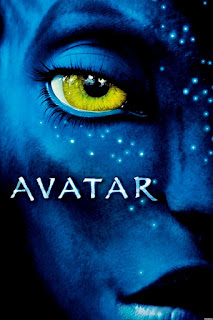Component II-Question 2-Audiences and Institutions
5. In relation to the media area you have studied, discuss the ways audience consumption has changed over time.
Over time there has been a major shift in the ways audiences consume films. Audiences and consumers used to primarily view films in cinemas, but over the years there has been a growing rise in home exhibition. Going from VHS to DVD to eventually streaming, innovations in the ways that films can reach audiences in the comfort of their home are constantly being made.
Audience consumption is a paramount factor companies have to consider because it directs them on their marketing strategy. An example of this would be one of the many research reports done on audience consumption and viewing habits. Studying audience consumption doesn’t only mean understanding where viewers watch movies, but also what movies they want to watch. The popular streaming service Netflix uses viewer analytics to decide what content should be made and who to direct it to.
In recent weeks, with the outbreak of COVID-19, there has been an astounding phenomenon that movie companies are observing, the great success of straight to home movies. The most recognizable example and case study is the film “Trolls World Tour”. Within the first three weeks of its release to on-demand services, it made over 100 million dollars. This exceeded the expectations of Universal Studios and pointed out to other studios the viability of this option.
Additionally, many other studios also crept their films onto on-demand services amid the closure of cinemas during the pandemic. Disney, with its recent release of “Frozen 2”, quickly moved it onto its new streaming platform Disney+. This showed that they were willing to release it for home exhibition shortly after its release, albeit under external circumstances. The pandemic didn’t make any new revelations in the cinema and streaming service industry, it is already understood that there have been changes in the ways audiences want to consume films, but it may just catalyze a major shift towards home exhibition.
The final manner of how audience consumption has changed over time is illegal internet viewing. Amid the digitalization of most films and services and the rise of the internet in the past 30 years, there has been a great deal of illegal online exhibitions of movies. If a movie is only a couple of years old you may just be able to find it for free online fairly easily. And if that’s the case who would want to make a trek to the cinemas and pay when within a year they can watch it for free in a few clicks. In my own personal experience, this has been very much the case, with such a vast catalog of pirated films being accrued online why would I need to view it in cinemas unless I really desire that textile experience.
Although I don’t believe cinemas are going away anytime soon it is fairly evident that there has been a shift in audience consumption over the years. Just as well, home exhibition has evolved over the years and has gone through various formats, but streaming may just be the most prevalent to come out of it. And beneath that, there is also the unrefutable indulgence that viewers have towards illegal internet viewing. In summation, audience consumption reflects people’s desire to view films in the comfort of their homes.
In recent weeks, with the outbreak of COVID-19, there has been an astounding phenomenon that movie companies are observing, the great success of straight to home movies. The most recognizable example and case study is the film “Trolls World Tour”. Within the first three weeks of its release to on-demand services, it made over 100 million dollars. This exceeded the expectations of Universal Studios and pointed out to other studios the viability of this option.
Additionally, many other studios also crept their films onto on-demand services amid the closure of cinemas during the pandemic. Disney, with its recent release of “Frozen 2”, quickly moved it onto its new streaming platform Disney+. This showed that they were willing to release it for home exhibition shortly after its release, albeit under external circumstances. The pandemic didn’t make any new revelations in the cinema and streaming service industry, it is already understood that there have been changes in the ways audiences want to consume films, but it may just catalyze a major shift towards home exhibition.
The final manner of how audience consumption has changed over time is illegal internet viewing. Amid the digitalization of most films and services and the rise of the internet in the past 30 years, there has been a great deal of illegal online exhibitions of movies. If a movie is only a couple of years old you may just be able to find it for free online fairly easily. And if that’s the case who would want to make a trek to the cinemas and pay when within a year they can watch it for free in a few clicks. In my own personal experience, this has been very much the case, with such a vast catalog of pirated films being accrued online why would I need to view it in cinemas unless I really desire that textile experience.
Although I don’t believe cinemas are going away anytime soon it is fairly evident that there has been a shift in audience consumption over the years. Just as well, home exhibition has evolved over the years and has gone through various formats, but streaming may just be the most prevalent to come out of it. And beneath that, there is also the unrefutable indulgence that viewers have towards illegal internet viewing. In summation, audience consumption reflects people’s desire to view films in the comfort of their homes.





























